South Korea Flag Meaning
A white field with a red and blue taegeuk (yin-yang symbol) in the center surrounded by four black trigrams from the I Ching, representing the harmony of opposites, the balance of natural forces, and the philosophical foundations of Korean civilization dating back thousands of years.
- Continent
- Asia
- Adopted
- 1949
- Ratio
- 2:3
- Colors
- white, red, blue, black
- Designer
- Unknown (ancient origins)
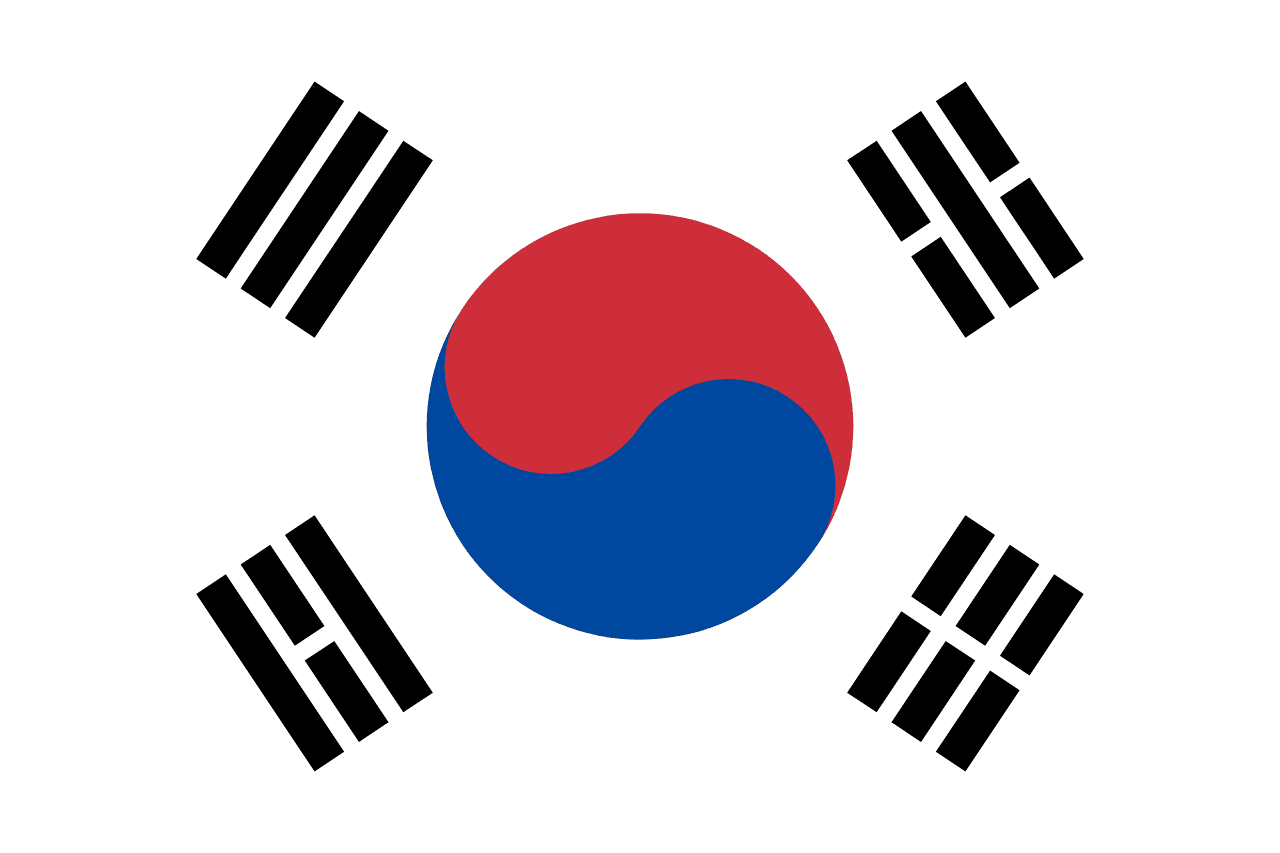
Symbolism
White Field: Represents peace, purity, and the bright spirit of the Korean people, symbolizing the nation's desire for harmony and the clean, honest character that Koreans aspire to maintain.
Red and Blue Taegeuk: Represents the eternal principle of yin and yang, with red symbolizing positive cosmic forces and blue representing negative cosmic forces, demonstrating the balance and harmony of opposing elements in the universe.
Four Trigrams: Represent the four fundamental elements from the I Ching: heaven (☰), earth (☷), fire (☲), and water (☵), symbolizing the movement and harmony of these forces in nature and human life.
Philosophical Foundation: The flag embodies Korean Confucian and Taoist philosophy, representing the balance, wisdom, and harmony that should guide both individual conduct and national governance.
History
- 2333 BC-668 AD: Ancient Korean kingdoms including Gojoseon, the Three Kingdoms (Goguryeo, Baekje, Silla), and their unification under Silla established Korean identity, culture, and territorial foundations.
- 918-1392: The Goryeo Dynasty unified Korea and gave the country its name, developing distinctive Korean culture, art, and technology including movable metal type printing and celadon ceramics.
- 1392-1910: The Joseon Dynasty established Confucian governance, created Hangul script, and maintained independence while managing relationships with China, though it increasingly isolated itself from the world.
- 1910-1945: Japanese colonial rule suppressed Korean culture and language while exploiting Korea's resources and labor, creating lasting resentment and fueling independence movements.
- August 15, 1945: Liberation from Japan was followed by occupation and division by the US and Soviet Union at the 38th parallel, setting the stage for permanent partition.
- August 15, 1948: The Republic of Korea was established in the south under Syngman Rhee, while the Democratic People's Republic of Korea was created in the north under Kim Il-sung.
- October 15, 1949: The current flag design was officially adopted, updating the traditional Taegukgi that had been used during the independence movement and early republic.
- June 25, 1950-1953: The Korean War devastated the peninsula and killed over 3 million people, ending in armistice rather than peace treaty, leaving Korea permanently divided.
- 1960s-1980s: Military dictatorships under Park Chung-hee and Chun Doo-hwan brought rapid economic development but also political repression, labor unrest, and student protests.
- 1987-1988: The June Democratic Uprising forced democratization, leading to direct presidential elections and the establishment of democratic institutions before hosting the Seoul Olympics.
- 1997-1998: The Asian Financial Crisis tested South Korea's democracy and economy, leading to IMF bailout and structural reforms that strengthened both democratic and economic institutions.
- 2000s-Present: South Korea has become a global cultural power through K-pop, K-dramas, and technology companies while maintaining robust democracy and dealing with North Korean nuclear threats.
Trivia
- South Korea has achieved the 'Miracle on the Han River,' transforming from one of the world's poorest countries in the 1960s to a wealthy, technologically advanced democracy.
- The flag represents the birthplace of major technology companies including Samsung, LG, and Hyundai that have become global leaders in electronics, smartphones, and automobiles.
- Korean culture has exploded globally through the 'Korean Wave' (Hallyu), with K-pop groups like BTS and Blackpink, K-dramas, and Korean cinema winning international acclaim.
- South Korea has the world's fastest internet speeds and highest smartphone penetration, making it one of the most connected and digitally advanced societies.
- Korean (Hangul) is considered one of the world's most scientific writing systems, created in the 15th century by King Sejong to promote literacy among common people.
- The flag flies over a country with mandatory military service for men due to ongoing tensions with North Korea and the technically still-active Korean War.
- South Korean education is highly competitive, with students attending school and private academies (hagwons) for extremely long hours to prepare for university entrance exams.
- Traditional Korean culture includes distinctive arts like traditional music (gugak), martial arts (taekwondo), and architectural styles seen in palaces and temples.
- Korean cuisine has gained international popularity, featuring dishes like kimchi, bibimbap, bulgogi, and Korean BBQ that reflect the country's agricultural and fermentation traditions.
- South Korea has universal healthcare and has achieved remarkable improvements in life expectancy and health outcomes through public health investments.
- The country practices Confucian values emphasizing respect for elders, education, and social harmony, though these are evolving with modernization and globalization.
- South Korea is one of the most ethnically homogeneous countries in the world, though immigration and international marriage are gradually increasing diversity.
- The flag represents a country that has successfully balanced rapid economic development with environmental protection, though air pollution and climate change remain challenges.
- South Korea has a vibrant democracy with regular peaceful transfers of power, though political polarization and social tensions have increased in recent years.
- The DMZ (Demilitarized Zone) between North and South Korea has become an accidental nature preserve, hosting wildlife that has disappeared from other parts of the peninsula.
Related Countries
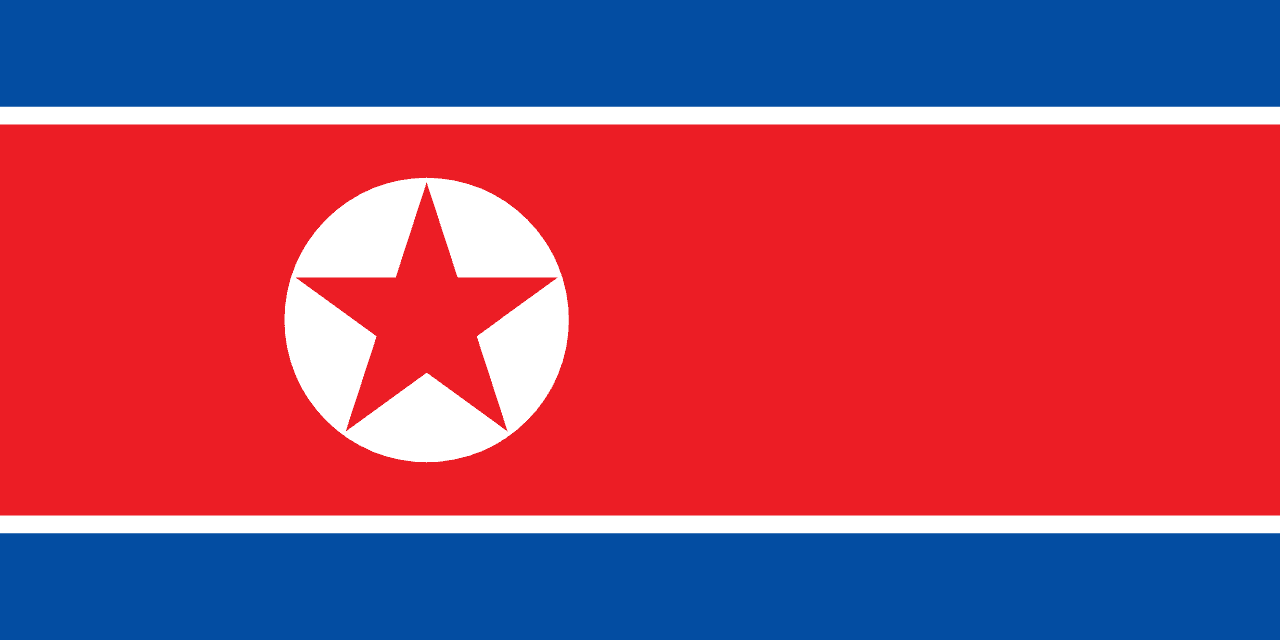
North Korea
Asia
The flag of North Korea, adopted in 1948, combines red, white, and blue with a central red star. Its design reflects socialist symbolism while incorporating elements rooted in Korean identity. For the state, it represents revolution, unity, and loyalty, while for observers it has become one of the most recognizable emblems of the modern Korean peninsula.
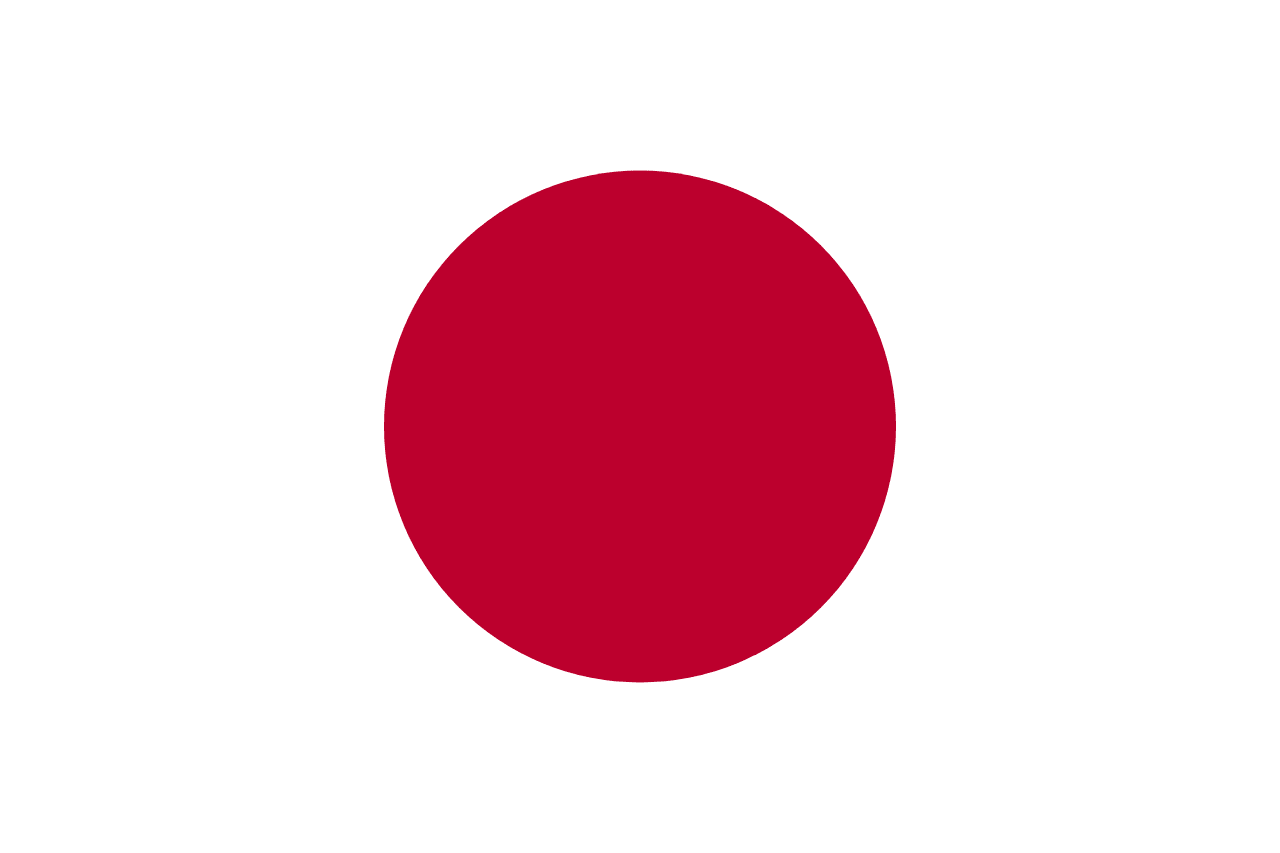
Japan
Asia
Hinomaru - the rising sun disc on white field, one of the world's oldest flag designs representing Japan as the 'Land of the Rising Sun'.

Taiwan
Asia
A red field with a blue canton containing a white twelve-pointed sun, representing the Republic of China flag adopted in 1928, symbolizing the Three Principles of the People (nationalism, democracy, livelihood), the twelve traditional Chinese hours, and the aspiration for progress and development.
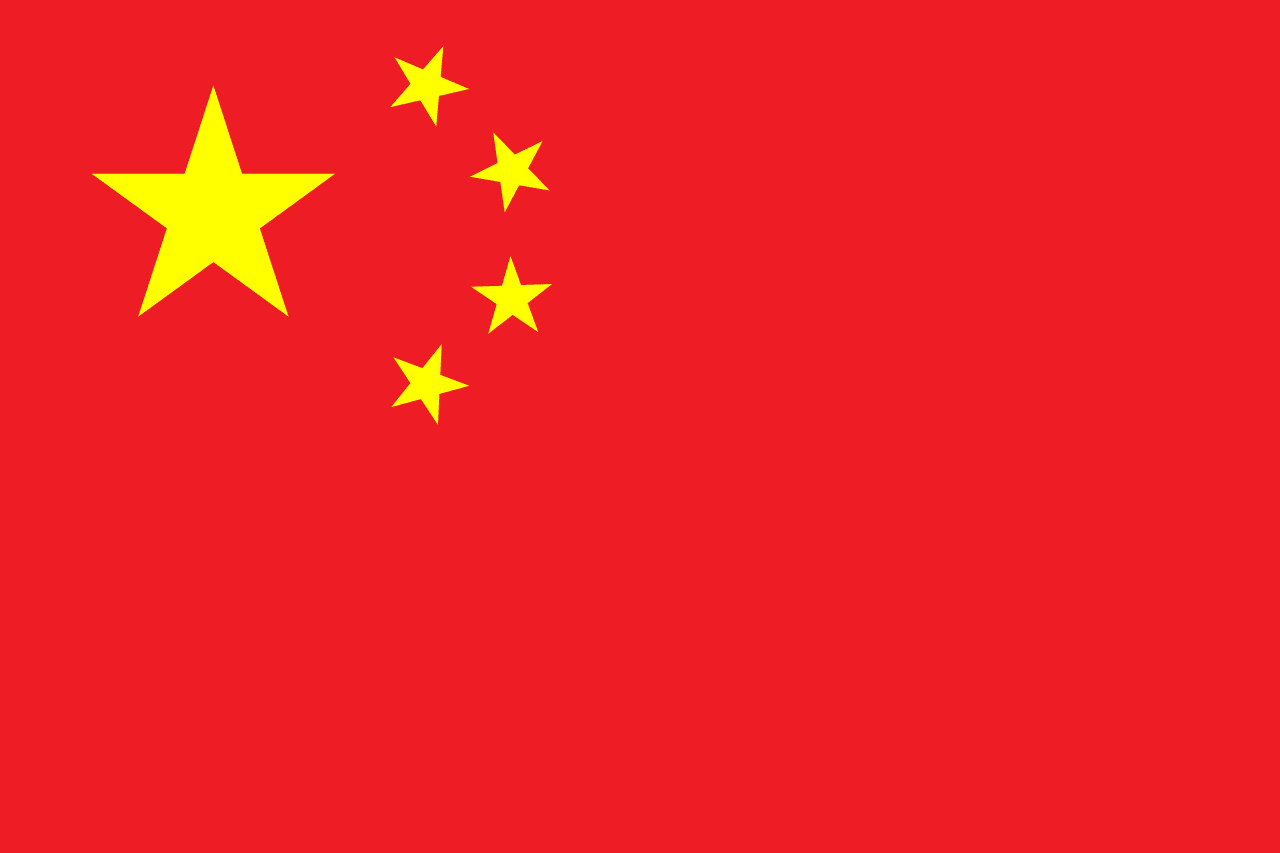
China
Asia
Red field with five golden stars representing unity under Communist leadership and the four social classes.
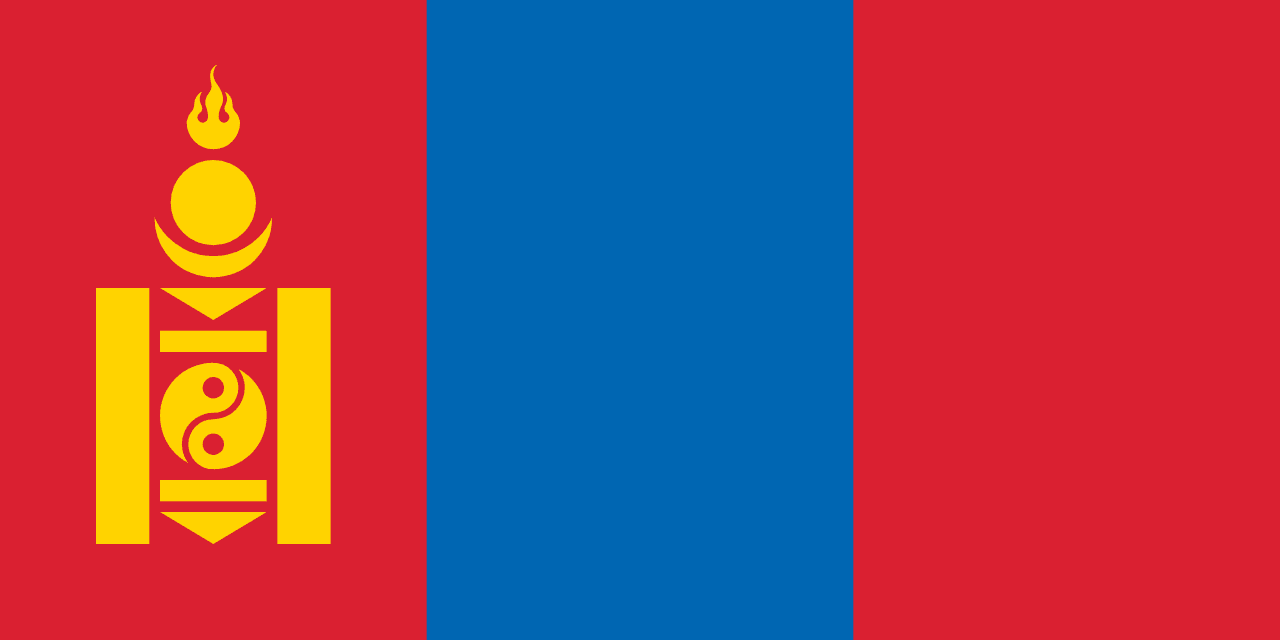
Mongolia
Asia
Three vertical stripes of red, blue, and red with the ancient Soyombo symbol in yellow on the hoist-side red stripe, representing Mongolia's transition to democracy and its deep philosophical traditions rooted in Tengrism and Buddhism.

Philippines
Asia
A horizontal bicolor of blue over red with a white equilateral triangle at the hoist, containing a golden sun and three golden stars. The Philippine flag is unique in that it is inverted in wartime, with the red field displayed on top.